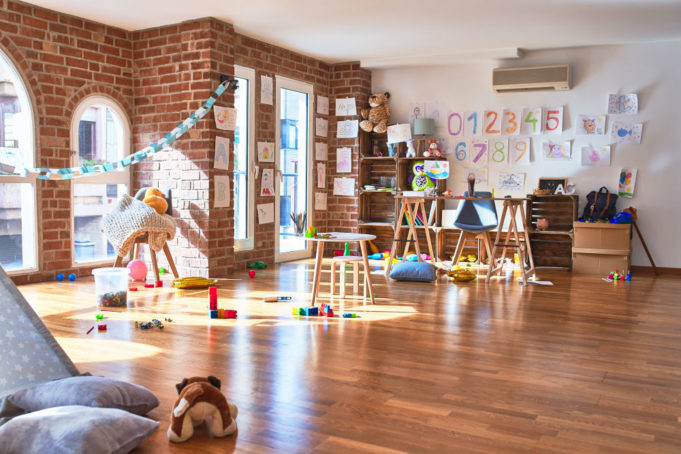The coronavirus known as SARS-CoV-2 has led to the uprooting of societies and norms all around the globe. With over 400,000 confirmed cases worldwide and many more left undiagnosed, the rapid spread of the virus has led to unprecedented mitigation measures being taken, from shutting down bars, restaurants and other public gathering spaces to issuing shelter-in-place orders.
In many areas of the country, only essential businesses such as grocery stores, pharmacies, and construction companies are allowed to remain open. Others have directed their employees to work from home if possible. Since many of these workers have infants or children who are out of school due to the virus, it provides them the opportunity to both work and care for their kids at home.
Unfortunately, not every parent is afforded the luxury of knocking out two birds with one stone by working from home. Parents with young children who are still required to commute to and from work need childcare now more than ever, as it is likely that they are essential employees whose labor is required for the continued operation of society.
While schools may have shut down due to COVID-19, many childcare centers remain open for this reason. However, as daycare centers tend to be known for harboring bacteria and germs, there is a rising concern regarding whether or not these establishments are helping spread the virus. So parents may find themselves asking the question: is it safe to take my child to daycare during the COVID-19 outbreak?
Unfortunately, there’s no simple or straightforward answer to this. While childcare services are undeniably essential to workers whose occupations require them to be on the frontlines of the coronavirus fight, they also entail confining many children into an enclosed space where the virus could potentially spread.
After school districts closed in Colorado, some childcare centers decided to follow suit, with owners claiming that large groups of children should not be allowed in the same area when places like ski resorts and restaurants were already being shut down. However, state officials have requested that these centers stay open if at all possible, citing that they are imperative for a large portion of the US healthcare workforce who are essential to the fight against COVID-19.
As it turns out, many healthcare workers are parents with young kids–more so than many other occupational fields. 29% of healthcare provider households in the US must provide care for children between the ages of 3 and 12. For these families, the continued operation of childcare facilities is paramount to their ability to help prevent the spread of COVID-19. For this reason, the state of Colorado has launched free emergency childcare services for health professionals and first responders.
While arguments can be made both for and against childcare services remaining open during this pandemic, the reality is that many of them will continue to do so, and many parents will have no other choice but to utilize them. Therefore, it is crucial that both parents and care providers understand the implications of this, while exercising extreme precautions in sanitation and disinfection.
Daycare providers can maintain a safe environment by prioritizing sanitation above all else and establishing protocols. All childrens’ hands should be thoroughly washed upon entering and exiting the daycare. Further spread of germs can be reduced by washing off all toys, pacifiers, and other items in diluted bleach as often as possible. If a child gets sick or begins to show symptoms while in care, he or she should be separated from the rest until picked up by their guardian.
Parents can do their part simply by adhering to standards already set in place by the Center for Disease Control: proper hand-washing, refraining from touching the face, eyes or mouth, and social distancing. Children still enrolled in services should avoid large groups at all times outside of daycare, and parents who are sick or who have sick children should do everything in their power to stay isolated in their homes, provided that emergency medical care is not needed.
Although the infection rate of COVID-19 amongst children is far lower than that for adults, they still may be able to spread it to older, more susceptible people. Much remains to be discovered in terms of how COVID-19 affects people differently depending on age, overall health, and other factors. For now, the best any parent can do for themselves and their families is to listen to the experts and follow their guidelines.
For more information on COVID-19 and its effect on schools and childcare programs, visit the CDC website.













